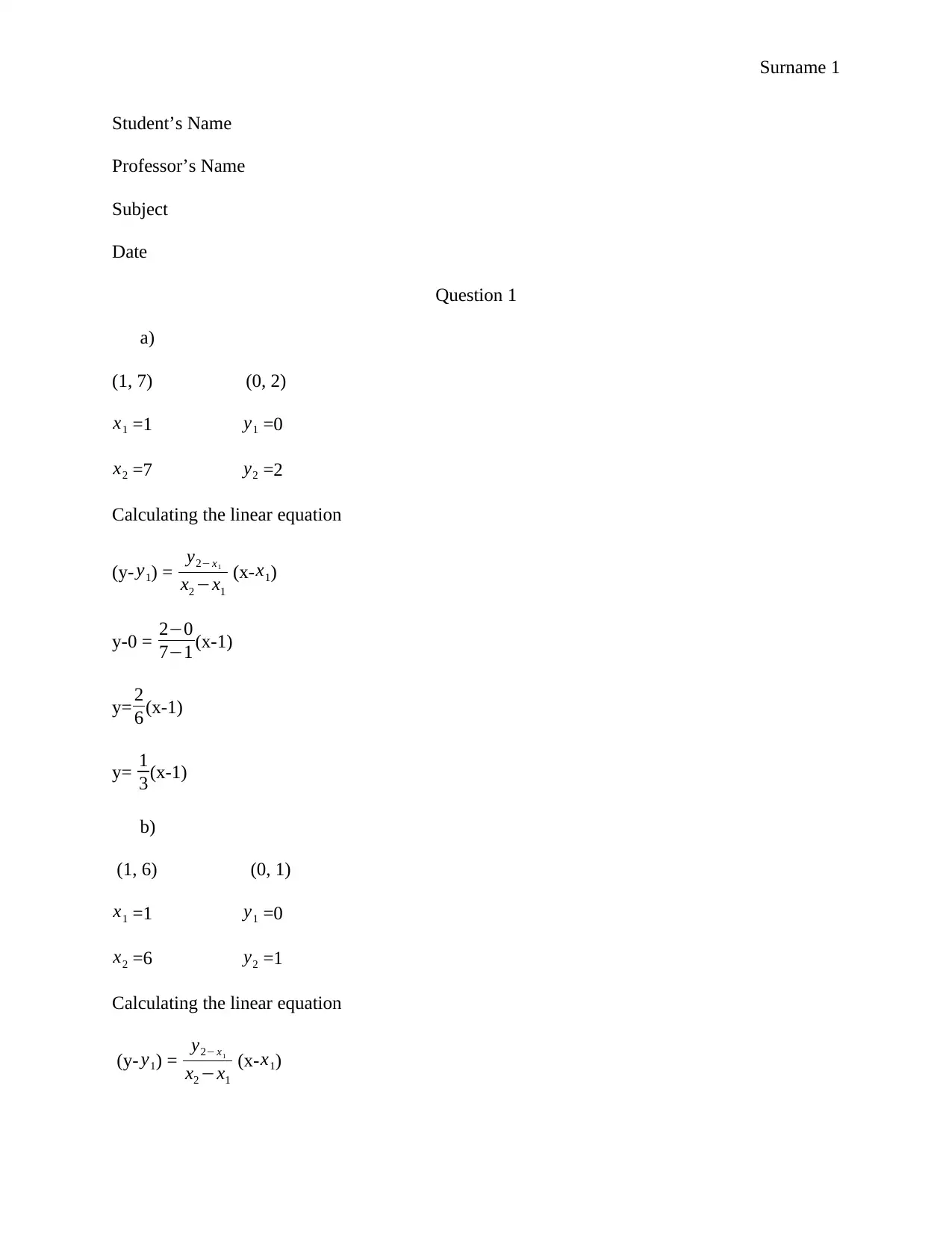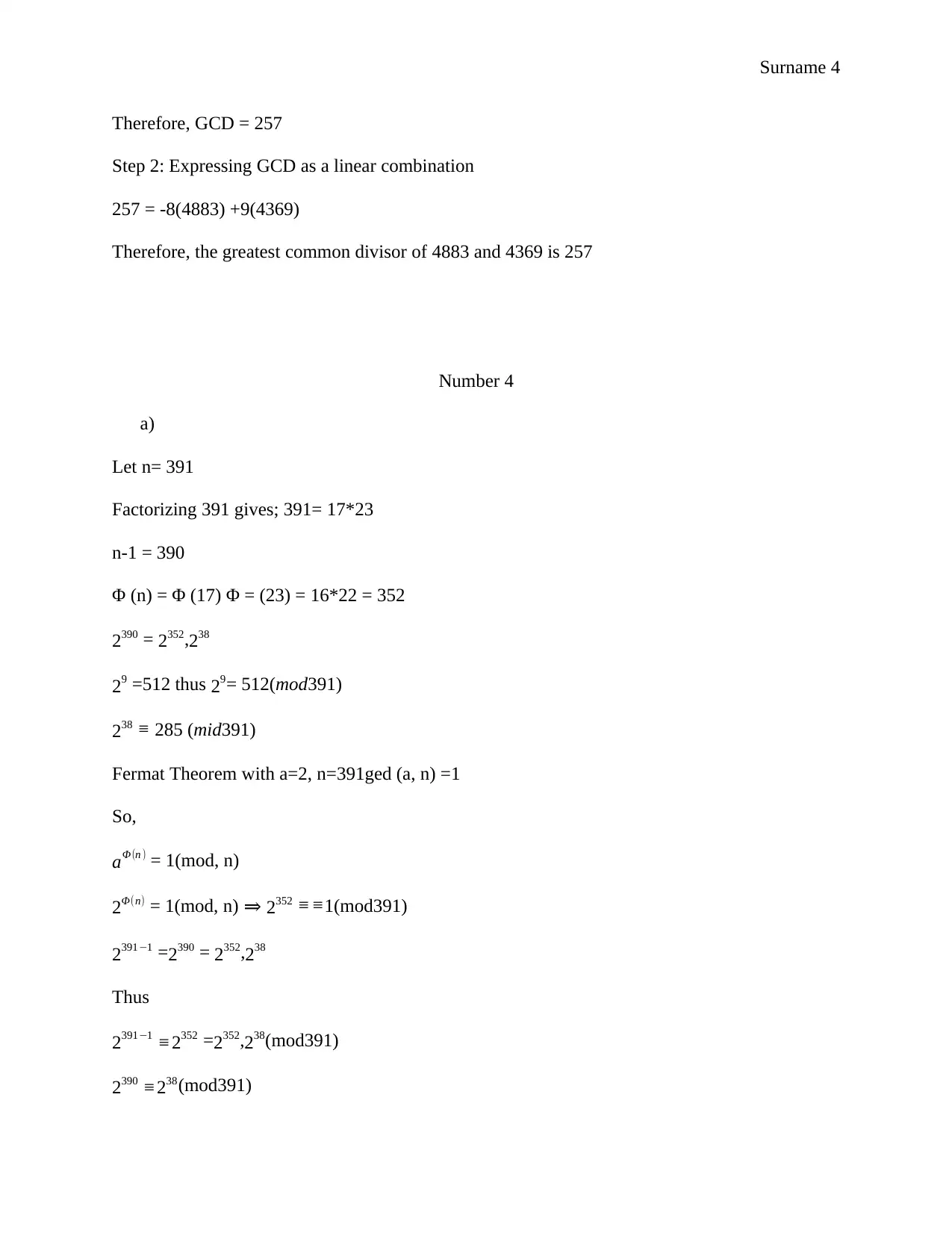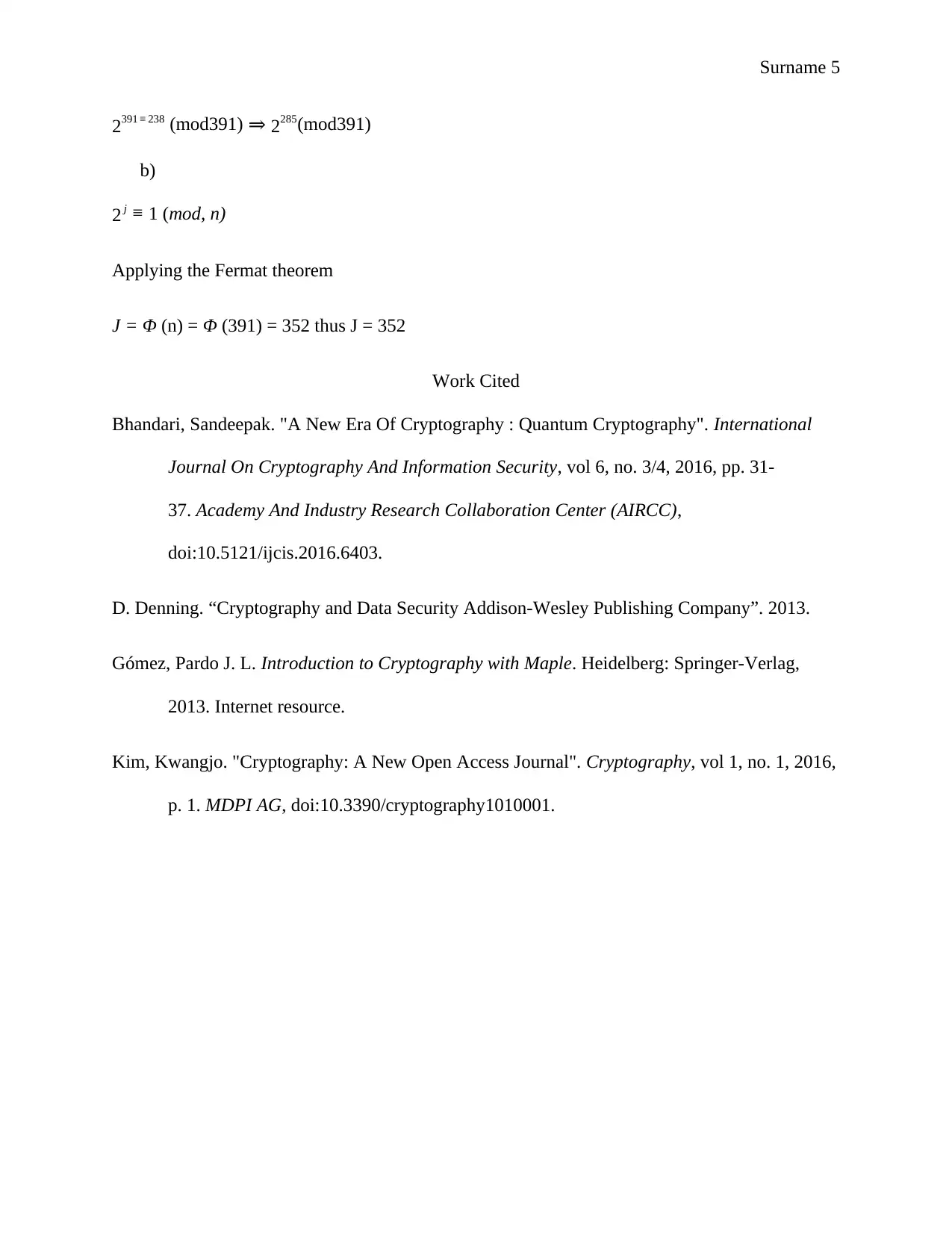Cryptography, LFSR, GCD, and Fermat's Theorem Assignment
VerifiedAdded on 2022/11/13
|5
|757
|184
Homework Assignment
AI Summary
This document presents a complete solution to an AI assignment focused on cryptography. The solution begins with an affine cipher problem, including finding the equation of the cipher and using it for encryption and decryption. It then delves into Linear Feedback Shift Registers (LFSRs), computing the first 20 bits of a given LFSR and determining its period. The assignment also includes a problem involving the Extended Euclidean Algorithm to calculate the Greatest Common Divisor (GCD) of two integers and express it as a linear combination. Finally, the solution applies Fermat's Theorem to a given number, demonstrating a comprehensive understanding of cryptographic principles and mathematical concepts relevant to AI and data security. The document showcases the student's ability to apply these concepts to solve practical problems and provides detailed explanations for each step.
1 out of 5











![[object Object]](/_next/static/media/star-bottom.7253800d.svg)